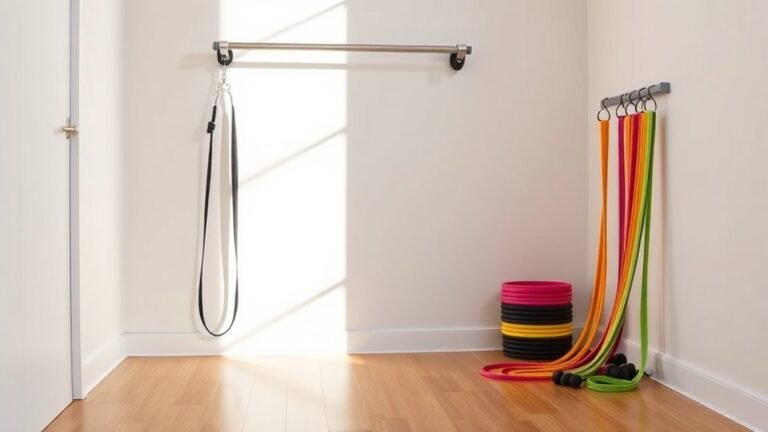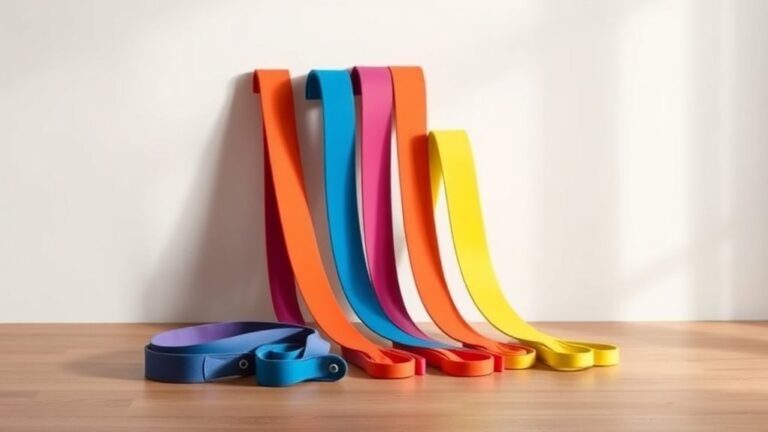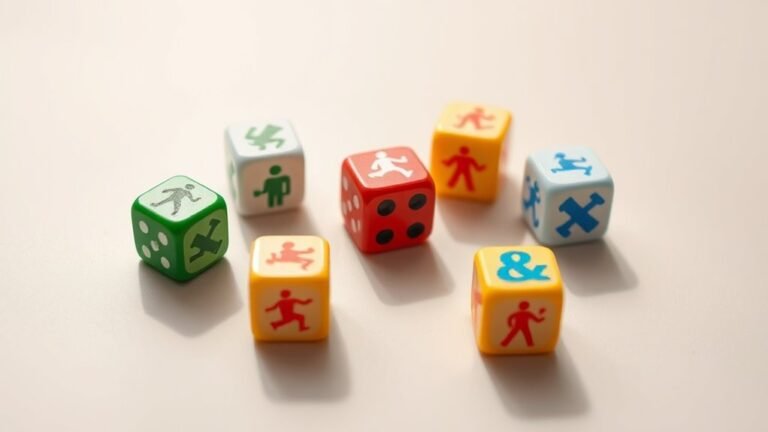Ultimate Leg Workout Routine : The Best Exercises for your quads, hamstrings and calves
It’s changing. Leg days used to be less crowded in the gym. But now it’s changing. Your leg day workout is crucial in achieving a symmetrical, good looking physique. So you need a good leg workout routine.
Let’s look at the anatomy of legs
Your leg has the biggest muscles in the human body.
The quadriceps and the hamstrings. Quadriceps in anterior and hamstrings on the posterior part of upper legs.
Quadriceps, as the name suggests, has 4 large muscles
- Rectus Femoris
- Vastus Lateralis
- Vastus Intermedius
- Vastus Medialis

Quadriceps muscles are strong knee extensors.
Rectus femoris originates from the (ilium) uppermost part of your hip bone and inserts into the tibia of the lower leg. Rectus femoris is also a hip flexor due to the attachment with the hip bone.
The rectus femoris crosses two joints your knee and hip joint. Thus it enters active insufficiency when you do hip flexion and extension at the knee.
Hamstrings:
Your hamstrings muscles are on the posterior side of the upper leg. These muscles are strong knee flexors. Four muscles make up your hamstrings.
- Biceps Femoris Long Head
- Biceps Femoris Short Head
- Semitendinosus
- Semimembranosus
The three hamstrings muscles (Biceps femoris long head, Semitendinosus, Semimembranosus) origin from the lower part of the hip bone ( ischium). The biceps femoris short head origin from the posterior surface of the femur. Both long head and short head of femur insert into the lateral condyle and head of fibula and tibia( calf bones).
The other two muscles Semitendinosus and Semimembranosus insert into the medial condyle of the tibia.
Biceps femoris, semitendinosus, and semimembranosus cross two joints, as you have seen with rectus femoris. Thus it undergoes active and passive insufficiency under certain positions of knee and hip.
It will be under active insufficiency when you are doing knee flexion with your hips extended; this will make your short head to take over the work.
It helps us while selecting the best exercise for training your hamstrings.
Calf muscles:

The calf is made up of two muscles – Gastrocnemius and soleus. The gastrocnemius is the larger of two. It has two muscle heads. The gastrocnemius origin from the femur and soleus origin from the upper part of the tibia and fibula( calf bones). Both muscles taper and merge at the base of the calf muscle and insert into your heel bone (calcaneus).
The gastrocnemius muscle crosses two joints (knee and ankle joint) so it will undergo active insufficiency under the specific position that causes shortening of the muscle.
When you were doing a plantarflexion( seated calf raise) with your knees flexed (90 degrees), the gastrocnemius will be in active insufficiency and the soleus muscle will have to do the work ( gastrocnemius will be inactive).
You can make this useful in hamstrings exercise. During knee flexion, you can keep your ankle plantar flexed. This will ensure that the load will be taken by your hamstrings. Calf muscles will remain inactive.
Your soleus muscles respond well with low-velocity movements and in the concentric phase.
While gastrocnemius gets activated with large velocity lengthening exercise. It also shows great response in the eccentric phase of exercise.
To train your soleus muscle, use the seated calf raise, and focus on the concentric phase.
To train gastrocnemius to use the standing calf raise version with faster reps. The fast-twitch muscles are dominant in them.
Exercise selection:
- For your legs, choose compound exercise over isolation exercise.
- Compound exercises are multi-joint exercises that work more than one muscle. You have to select an exercise that helps you to add weight safely and progress over time.
- Start your workout with a compound exercise like the squat. Properly warm-up before going heavy.
Exercise form:
Proper form is essential while doing an exercise. Otherwise, you will be inviting an injury.
Exercise form is necessary while doing lower body exercise. Your spinal column is prone to damage if your form is improper.
You have to keep your back neutral by maintaining your natural arc. Don’t overarch as it can add stress to your spinal disc.
When I first learned deadlift, I misinterpreted the term “maintain natural arc” and purposefully arched my back.
Back pain stopped me from further progressing. So don’t over arch your back while doing exercises. I correctly learned deadlift during my DPT.
Sets: 3- 4 sets each exercise
Reps: to train legs, you do 4-8 reps.
Frequency: Frequency is the number of times you train your muscles each week. It’s good to train your legs once every week.
Rest in between sets: 60-90 s rest is best for muscle hypertrophy. Suitable for ATP restoration.
Progressive overload: increase the weight if you hit your target reps. If your target rep is 12, increase the weight lifted if you have done 12 reps. Progressive overload is the key to muscle growth.
Equipments for training your quads
Power rack:
Power rack will help you to lift weights safely without the help of a spotter. The power rack is a square metal frame that has holes every 2 inches in its vertical posts and has two horizontal support bars.
Power rack will be useful if you have no spotter while doing squats. If you fail while squatting, you can drop the weights on the support rods in the power rack.
You only need to place the rods slightly lower than the lowest bar path.
A barbell is an iron rod with a provision to add weights at both ends. They are 4ft to 7 ft long, for our purpose we need a 7ft bar.
Dumbbell is a short bar with a weight attached to each end.
Weight plates are usually made of cast iron. It is added to the barbell to increase weight.
How to do each exercise
Barbell squats / Barbell back squats
-best way to build up leg muscles
#1 in our leg workout routine
How to squat properly?
Load the bar on the squat stand or in a power rack. If you are using a power rack, it will be safe to handle heavy loads.
Stand facing the bar, grab the bar, and place it on your back by moving under the bar.
Take a big breath and unrack the bar by straightening your knees. Move back and stand on your feet at shoulder-width apart.
Keep your chest up and your spine neutral. Squat down with the bar while keeping your core tight as possible.
Lower till your move past parallel to the floor. Squat back to starting position.
Exhale, breathe, and repeat.
Barbell squats form:
Squat is one of the best leg workouts for mass and strength but you have to be careful while doing a barbell squat.
Place the bar on the squat rack and load with weights.
You can use a power rack or any squat stand. The benefit of using a power rack is its safety.
If you can’t squat back the weight to the starting position, you can leave the bar on the horizontal supports by lowering it. The horizontal bars will catch the bar.
Some squat stands have horizontal support bars. Use it if it is available.
Stand facing the bar and grab the bar ( wider than shoulder-width).
Place the bar on your upper back by dipping below the bar. You can place it on your traps( high bar) or between traps and rear shoulders(low bar). The proper way is to place the bar on the spine of scapula.
Unrack the bar by straightening your knees. Move back and stand with your feet at shoulder-width apart. Keep your feet with toes pointed outwards, this will be easy on your hips.
Keep your chest up and your back neutral by maintaining your natural arc.
Don’t look up while squatting. It will increase the stress on your cervical spine.
Look at the floor 5-6 ft away; this will help you to keep your head aligned with the torso.
Lower your body by moving your hips back and knees out. Your knees should move over your toes.
Move your knees out till it reaches over your midfoot. After this, lower your hips until it moves past horizontal.
Don’t pause at the bottom; push back to the starting position. During this move, use your hamstrings and glutes to squat back to the starting position. At the top of the move squeeze your glutes.
Breathe out and repeat for the required number of reps.
Squat breathing technique:
You can either use valsalva maneuver or normal breathing.
In a valsalva maneuver, you take a big breath and tighten your core. Then execute the rep and exhale after you finished the rep.
- Helps to lift more weights
- Keep your body rigid thus helps to protect your spine.
In normal breathing you breathe while eccentric portion of lift and breathe out while concentric part ie. during pushing.
Low bar vs highbar squat
With a low bar setup(the bar placed below the posterior deltoid), your torso will be at a 45-degree angle at the bottom; this position will work your hip muscles.
Powerlifters will use low bar squats as it involves your hip muscles during the lift. 10-20% increase in lift is possible with a low bar.
With a high bar (the bar placed above the traps), your torso will be more upright at the bottom; this will be quad dominant. High bar squats are practiced by those who practice Olympic lifts.
What muscles do barbell squats work?
Quadriceps, Gluteus maximus assisted by hamstrings

Leg press
-best leg workout routine for mass
Leg press is not a functional exercise.
With leg press, you can lift more weight than in squat. But it can’t replace a proper squat.
Be careful with leg press. You have to push the weight away from your body. As we think of leg press as safe, there is one issue with leg press.
It can damage your lower back. When you lower the weight too low, your but will lift off the support bench, and your back will round.
It will cause stress on your back.
So while doing leg press, observe your form.
Which one- leg press vs squat – squats
Leg press in smith machine: it’s not safe to do leg press in smith machine. I have done leg press in a smith machine, but had to stop it when the guide rods start to bend.
What muscles do leg press work?
Quadriceps(excluding rectus femoris), Gluteus maximus assisted by hamstrings.

Barbell Lunges
-killer leg workout
Lunges with barbell: is a unilateral leg exercise that works your quads, hips, glutes, hamstrings and core muscles.
If you are doing it for the first time, don’t use weights. It will be challenging to balance the load.
How to do barbell lunges?
Get yourself in a squat position, with the bar placed on your back and foot placed at hip-width.
Lunges are similar to walking; here, you will take a big step forward. Shift your weight forward and land your heels on the floor. Lower your body by flexing at your hips and knees of the front leg. Lower until your upper thigh is parallel to the floor.
Return to the starting position by extending your hips and knees to the starting position. Repeat with alternating legs.
While executing a lunge, don’t lean forward. Your torso must be upright throughout the movement. Keep your chest up throughout the movement.

Romanian deadlift
Romanian deadlift works your Glutes and hamstrings. Place the bar on a rack of knee height. Garb the bar with a grip wider than shoulder-width. Don’t keep it too wide.
Romanian deadlift form:
Keep your lower back neutral and chest up – this will help you to maintain the posture.
Take a big breath and lower the bar by moving your hips back while keeping your locked. Your shin should remain vertical. Keep the bar as close to your body( drag the bar).
Lower the bar till it passes the knee, and you will feel the stretch on your glutes and hamstrings. Pause and lift the bar by extending at your hips.
At the top, don’t lean back; at the bottom, don’t round your lower back. Both will put your spinal disc under stress and can cause injury.

Leg curls
-Seated leg curls or Lying version
This exercise targets your hamstrings. A seated leg curl machine is superior to lying and standing versions. So if it’s available, go with it.
Finish the leg curls with 2 sets of unilateral leg curls.
In unilateral, you do the exercise with one side. It’s necessary for balanced growth and even out any strength imbalance of both sides.
leg curls muscles worked
Seated Leg curls – Hamstrings and Gastrocnemius

Lying leg curls – Hamstrings (only biceps femoris short head ) and Gastrocnemius. You can curl more weight with seated leg curls than the lying version.

Leg curls with dumbbells
-Dumbbell version of lying leg curls
Lie flat on a bench facing down. Hold a dumbbell between your feet with legs straight. Bring the dumbbell towards your glutes by flexing your hamstrings. Slowly return to the starting position and repeat.
Not possible to do seated leg curls with dumbbells.
Standing calf raise
Stand on the edge of a block or step with feet placed shoulder-width apart. Your knees should be straight. Keep your body upright. Start the move by raising your heels by plantar flexion of your ankles.
Pause when you feel the full contraction on your calf muscles. Slowly lower yourself until you reach the starting position. The muscle targeted here is the big gastrocnemius muscle.
You can do this exercise with a barbell, dumbbell, or in standing calf machine.
Standing calf raise with Barbell:
Load the bar on the smith machine at chest height. Place a calf block under the bar. Grab and place the bar on your shoulder by moving under it.
Step on the calf block with your toes at shoulder-width apart. Start the workout by raising your heels by plantar flexion. Pause at the top, return until you reach the starting position.
Standing calf machine
Load the machine with weights. Bring your shoulders under the pad of the lever. Place your toes on the platform. Start the exercise by raising your heels by plantar flexion of your ankles.
Pause when you get a full contraction on your calf muscles. Lower yourself and repeat. Finish with the required number of reps.

Seated calf raise
Sit on the calf machine and adjust the lever to fit yourself. Bring your thighs under the support pad and place your toes on the calf block.
Raise the support pad and move the stopping lever. Start the exercise by lowering your heels until its parallel to the floor. Raise your heels to start position.
The primary muscle worked here is your soleus. The gastrocnemius will be in active insufficiency.

Hip thrust
Place the bench where you are planning to do hip thrust. Sit on the floor in front of the bench with your upper back resting on the edge of the bench.
Hip thrust form:
Keep your heels closer to your butt by bending at your knees. Keep your arms relaxed on the bench. The edge of the bench should touch your body just below your scapulae. Raise your hips using your glutes.
During this move don’t raise your toes or heels. It should remain fixed on the floor. At the top of the move, squeeze your glutes.
Lower yourself to starting position and repeat.
Hip thrust with barbell:
You can increase the resistance by placing a barbell on your pelvis. Use a support pad while using a barbell.
You can also try hip thrust with a dumbbell or resistance band.
Single leg split squat
Stand in front of a bench facing away from it. Place one leg on the bench by extending and place the top of your foot on it.
Lower your body by flexing your hips and knees. Pause just before you touch the floor. Return to starting position by extending your hips and knees. Repeat for a required number of reps and repeat with other legs.
Keep your torso upright and chest up. You can place a barbell on your shoulders to increase the resistance. But this requires you to balance the bar. So first learn how to do the workout without the bar.

Leg workout routine
Barbell Squats – 4* sets 4-6 reps
Lunges – 3 sets 6-8 reps // Single leg split squat – 3* sets 6-8 reps
Romanian deadlift – 3* sets 6-8 reps / Hip thrust 3 sets 6-8 reps
Standing calf raise – 3* sets 6-10 reps
Seated Calf raise – 3* sets 6-10 reps
Leg curls – 3 sets 6-8 reps

*Does not include warm-up sets, do 2-3 warm-up sets with light weights before doing working sets.
Rest for 60- 90 s between sets, good for muscle growth, this gives your muscles enough time to restore its energy stores.
Do this workout once every week.
A good workout is not enough for building huge thighs; you have to get proper nutrition and rest.
Muscle growth happens outside the gym. So take care of your nutrition and get enough sleep.
-Arun
Image credits: https://github.com/everkinetic/data








